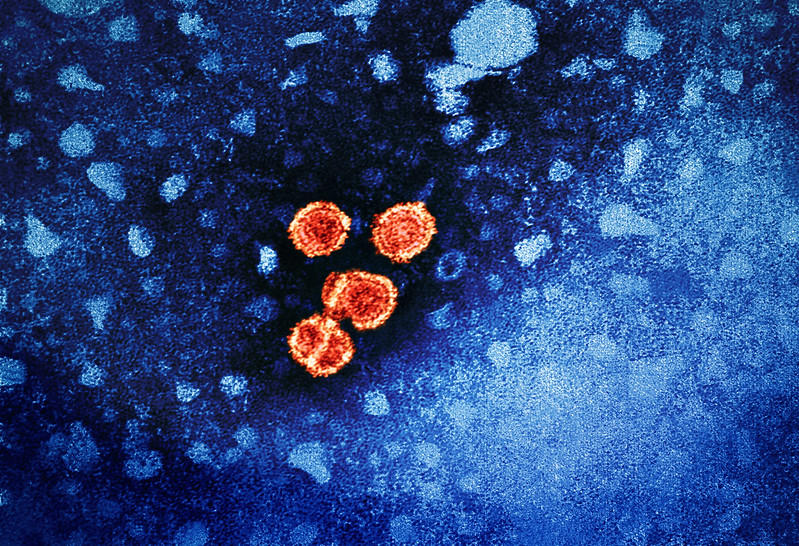Risk of Liver Cancer Declines for People with HIV, But Rates Remains Elevated
, by Elise Tookmanian, Ph.D.
People with HIV are at an elevated risk of developing liver cancer (specifically, hepatocellular carcinoma, the most common type of liver cancer). Using data from the HIV/AIDS Cancer Match Study, Jennifer McGee-Avila, Ph.D., M.P.H., C.H.E.S., C.P.H., postdoctoral fellow, and colleagues in the Infections and Immunoepidemiology Branch, determined that for people with HIV, the risk of liver cancer declined from 2001-2019, but the rate of liver cancer compared to the general population remains elevated. These findings were published in the Journal of the National Cancer Institute in August 2023.
The researchers determined that liver cancer rates are almost three-fold higher in people with HIV than the general population. This difference is partially due to higher prevalence of hepatitis B virus (HBV) or hepatitis C virus (HCV), which can be spread through similar paths as HIV (e.g., sexual transmission or drug injection). Indeed, people with HIV who inject drugs have a higher risk of liver cancer. The HIV/AIDS Cancer Match Study does not include information on HBV or HCV infection, so the researchers linked medical claims from Symphony Health, a claims aggregator, with the Texas site of the HIV/AIDS Cancer Match Study to estimate the HBV and HCV prevalence. Overall, of the 146 liver cancer cases among people with HIV in Texas, 25 percent were HBV-positive, 59 percent were HCV-positive, and 13 percent were both HBV- and HCV-positive. The highest prevalence of HCV among liver cancer cases occurred among people who inject drugs.
Based on these findings, prevention and treatment of HBV and HCV is crucial for people with HIV. Screening and treatment is available for both viruses, with curative treatment available for HCV. HBV can also be prevented through vaccination. In addition, other harm reduction efforts, such as access to clean syringes and needles, are vitally important to decreasing the risk of liver cancer in people with HIV.
Reference
McGee-Avila JK et al. Risk of hepatocellular carcinoma in people with HIV in the United States, 2001-2019. J Natl Cancer Inst. 2023.
